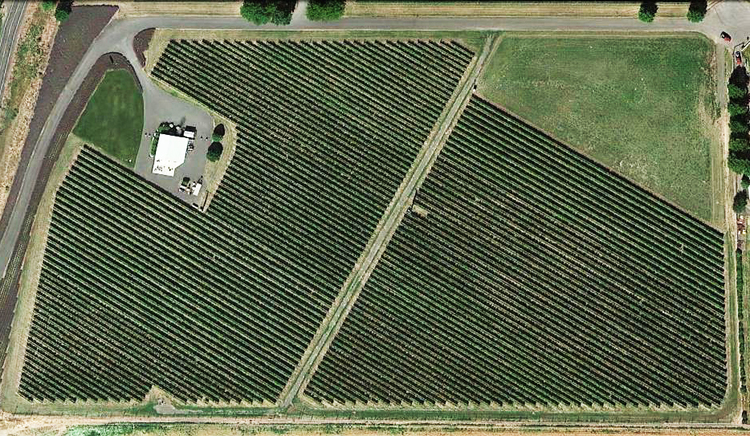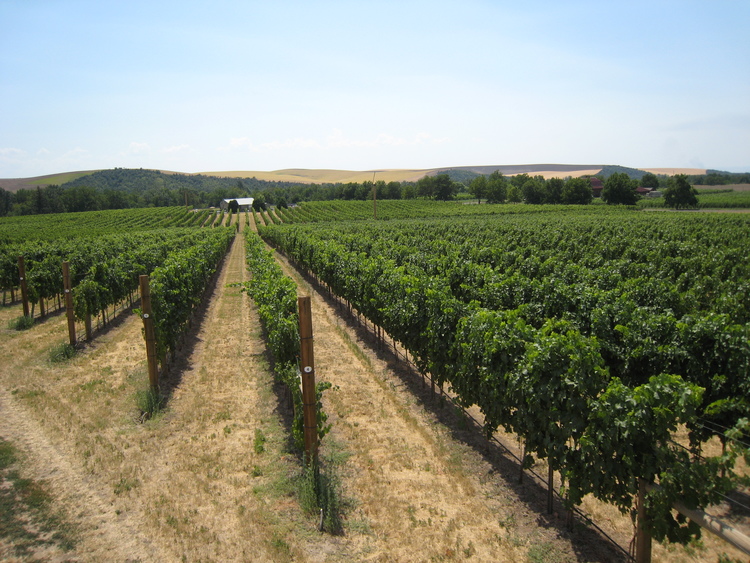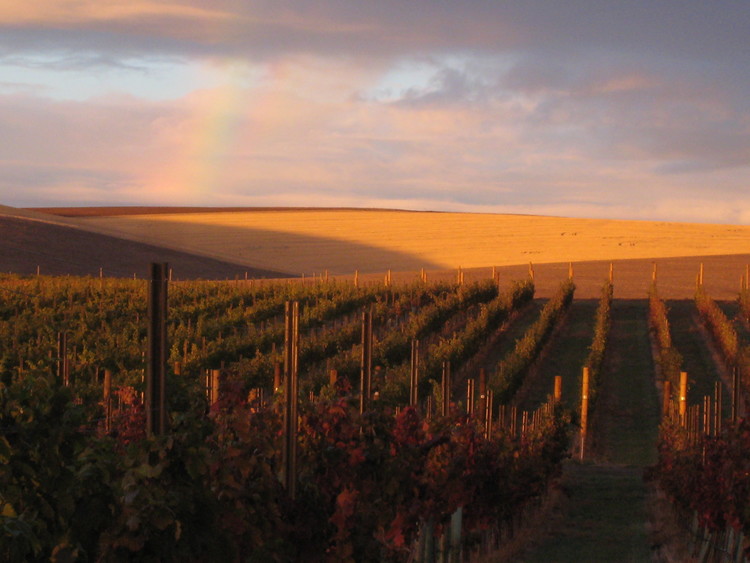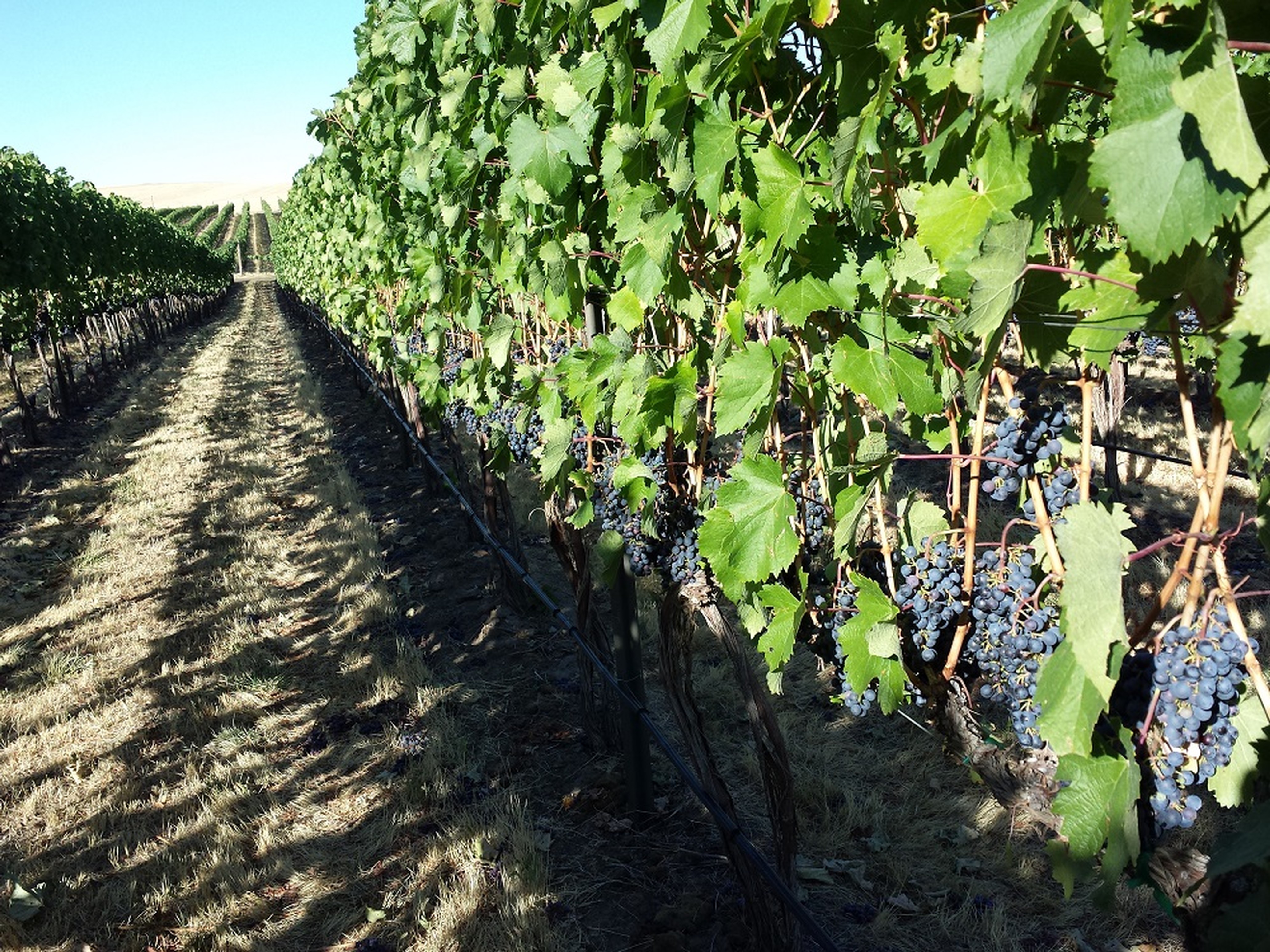àMaurice Estate Vineyard Overview
The àMaurice estate vineyard lies at an elevation of 1475 ft. on a gentle southwest-facing slope in the valley of Mill Creek. The vines are planted in the Walla Walla silt loam, a deep, well-drained soil derived from sediments deposited by catastrophic ice age floods that repeatedly inundated the Columbia basin between 15 and 12 thousand years ago. The Missoula floods, as they are known, originated from the repeated failure of a glacial ice dam in the Idaho panhandle.
Each time the floods receded, much of the Columbia basin was a barren wasteland covered with fine-grained sediment. The prevailing winds carried this sediment to the east, blanketing eastern Washington with a thick coating of wind-deposited silt, known as loess. Although much of the Walla Walla Valley was inundated, the site of the àMaurice vineyard was above the floodwaters.
The loess-based soils of the àMaurice vineyard exceed 10 feet in thickness. In the upper part of the vineyard they overlie basalt bedrock and in lower part of the vineyard they cover ancient Mill Creek floodplain gravels. The complexity of the soils in enhanced by a layer of calcium carbonate deposition known as caliche that commonly occurs at a depth of between 4 and 6 feet.
The silty texture of the soils allows the winter rains to penetrate deeply, providing a consistent supply of moisture during the spring and early summer when most vine growth occurs. As this moisture is gradually exhausted, it is replaced by supplemental irrigation in the late summer, as needed. Due to its relatively high elevation, the àMaurice vineyard is protected from the damaging frosts that threaten the lower parts of the Walla Walla Valley.
The vineyard also benefits from a cyclical pattern of air flow that is commonly in the Mill Creek Valley during the summer. As the rising sun warms the broad floor of the Walla Walla Valley, the lighter air pushes up into the Mill Creek Valley, displacing cooler heavier air. As the sun begins to set, the flow of air is reversed as cooler mountain air descends. This effect moderates the climate in Mill Creek Valley and encourages slow and balanced ripening of the grapes in the àMaurice vineyard.
- Professor Kevin R. Pogue Geology Department Whitman College
Winegrowing Philosophy
We are dedicated to raising quality fruit through environmentally sound farming practices. Maintaining the soil and plant organisms provides nutrients necessary to grow healthy vines and grapes. More than 15,000 vines were planted in May 2006. Merlot, Syrah, Cabernet Sauvignon, Malbec, Viognier, Cabernet Franc, and Petit Verdot Varietals. We are charter members of Vinea — an alliance of Walla Walla wineries and vineyards that adhere to the strict guidelines of sustainable viticulture. Please visit this website for more information on sustainable viticulture.




